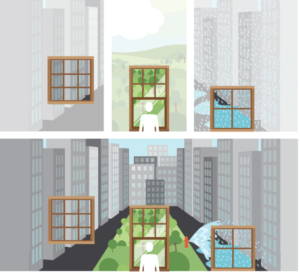Re-entry: This is the Moment You Can Change
In 2014, London Tube workers went on strike for 48 hours. During this time, commuters couldn’t take their normal routes — they were forced to use other subway stops to get to work.
As you can imagine, this must have been annoying to those affected. You arrive at your normal subway entrance and it’s blocked off. What do you do? You likely shrug your shoulders and carry on to the next one, assuming you’ll be late for meetings.
But when the strike ended, something funny happened: 5% of people didn’t return to their previous route to work. Instead, 5% of people had, in that two-day period, found a faster route, saving themselves on average six minutes a day.
Why did it take a two-day strike for people to realize they should take a different route to work? If, before the strike, you had asked Tube-taking Londoners, “Do you want to shorten your commute?” people would have said yes. Yet they didn’t actually take actions to shorten their commute. It took shutting down the Tube to make this possible.
Post-COVID Re-entry: What Will You Make Possible Now?
When our environment changes, our automatic habits are disrupted and we’re more open to change. If the environment of decision-making stays the same, your daily habitual behaviors will most likely stay the same. This is called the Habit Discontinuity Hypothesis (Verplanken, Roy, Whitmarsh, 2018).
The Habit Discontinuity Hypothesis trumps the popular mantra of habit formation – cue/ trigger/rewards. Of course, you can still follow this classic rule book, but be warned: few succeed unless it’s part of a larger environmental change. The Habit Discontinuity Hypothesis is arguably the main driver of new habit creation. And we are in it right now.
The discontinuity hypothesis requires a break in your normal environment – this can be a new job, new spouse, new home, new routine or a vaccine 🙂 There is a Window of Opportunity right after this break where habits are more malleable. Our automatic habits are disrupted by this break and we aren’t on autopilot anymore.

This window is typically between 1-3 months after the discontinuity and then our habits are locked in once again. TLDR: We have an insanely short period of time between when a discontinuity happens and we become our normal routine-loving robots.
A Discontinuity Is Coming – We Now Need to Choose What to Do With It.
To figure this out, we need to pretend you are the London commuter and the subway stop is about to re-open. Did you find a faster/better/more enjoyable route to something you normally do? Is this route worth keeping? What route do you want to permanently ditch?
To be clear, the pandemic was a discontinuity. Most of our environment and our lives changed – we spent money differently, we socialized differently, we worked differently.
But, when the pandemic ends (and it will soon!) most of us will go back to our old lives. We’ll brunch on Sundays, go into the office, travel, join a gym. It will be easy to slide back into those old lives – but if we do so without reflection, we may miss an opportunity to keep our faster routes.
For Behaviors We Want to Keep, We Will Need to Actively Work at It.
We should be “freezing” the new state and securing it against relapses – if we don’t actively try to freeze the new state, research suggests old habits are likely to be reinstated once the environment returns to normal.
Re-entry is obviously hard. To make it easier, we have created an exercise designed to help you reflect on what you have learned from Covid and what behaviors you want to keep. This is critical to reflect on now. You’ll look back at this moment years later as a time of transition. Now is the moment to make the most of the transition – the window of opportunity. The excercise guides you through thinking about different parts of your life.
Times will change very soon. But how will you change?
